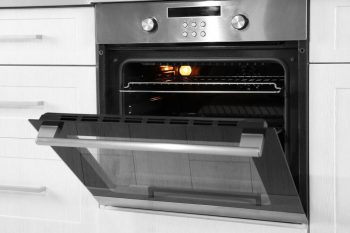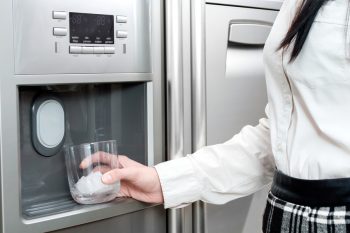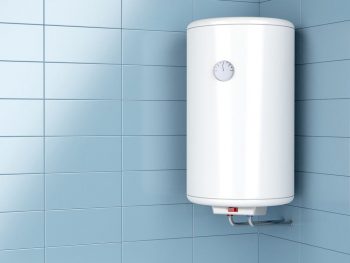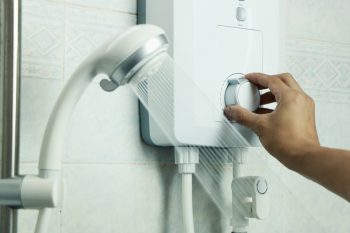
The refrigerator is the unsung hero of our homes, quietly humming away, keeping our food fresh and drinks chilled. But when the compressor – the heart of the refrigerator – starts to overheat, it can lead to a domino effect of issues, including increased energy bills, spoiled food, and even potential fire hazards. In this in-depth guide, we’ll explore how to cool down an overheated fridge compressor, signs you should look out for, and preventative maintenance practices that can save you time and money in the long run.
To cool down an overheated fridge compressor, start by ensuring your refrigerator is out of direct sunlight and has proper ventilation. Clean the condenser coils to improve airflow and check if the condenser fan is working properly. Test the temperature control thermostat and replace it if it’s faulty. After these steps, monitor the compressor’s temperature. If it continues to overheat, consult a professional technician.
Understanding the Fridge Compressor
The fridge compressor functions by increasing the pressure and temperature of the vaporized refrigerant, which is then circulated throughout the system. This process involves four stages: compression, condensation, expansion, and evaporation. As the refrigerant circulates, it alternately compresses and expands, changing its state from a liquid to a vapor, and absorbing and expelling heat in the process.
Signs of an Overheated Compressor
The first step to cooling down an overheated compressor is to identify the problem. Some early signs of an overheated compressor include:
- Poor air circulation
- High electricity bills
- Excessive heat
- Scorch marks on walls
- Faulty temperature control thermostat
Cooling Down an Overheated Compressor: A Step-by-Step Guide
If you notice any of these signs, it’s time to take action. Here’s a step-by-step guide on how to cool down an overheated fridge compressor:
1. Evaluate your fridge’s location
Ensure that your refrigerator is positioned out of direct sunlight and has proper ventilation. If the sun is shining onto the back of your refrigerator, it can make the compressor too hot.
2. Clean the condenser coils
Dirty condenser coils can cause the compressor to overheat. Clean the coils to improve airflow and help the compressor dissipate heat more effectively.
3. Test the condenser fan
Check if the condenser fan is working properly. If it’s faulty, replace it to ensure proper air circulation around the compressor.
4. Check the temperature control thermostat
The thermostat is responsible for controlling the voltage sent to the evaporator fan motor, the compressor, and the condenser fan motor. If it’s not functioning correctly, the compressor may overheat. Replace the faulty thermostat if necessary.
5. Monitor the compressor’s temperature
After addressing the above issues, plug the fridge back in and monitor the compressor’s temperature over the next few hours. If it’s still getting too hot, you may need to consult a professional technician for further assistance.
Preventative Maintenance Practices
To prevent future overheating and ensure your refrigerator runs efficiently, consider implementing these long-term maintenance practices:
- Clean the condenser coils at least once a year
- Ensure proper air circulation around the refrigerator
- Check and refill refrigerant levels if necessary
- Keep the fridge in a well-ventilated area, away from direct sunlight
- Check the fridge’s door gaskets and replace them if they’re worn out
- Limit the frequency and duration of door openings
In conclusion, cooling down an overheated fridge compressor involves identifying the problem, taking immediate steps to cool it down, and implementing long-term preventative measures. With proper maintenance and care, you can extend the lifespan of your fridge, save money on energy bills, and ensure your food stays fresh and safe. Remember, always consult a professional technician if you’re unsure or uncomfortable performing any of these steps.
Frequently Asked Questions
How often should I clean my fridge’s condenser coils?
It is recommended to clean your fridge’s condenser coils at least once a year. However, if your fridge is located in a dusty area or you have pets, you might need to do it more frequently.
How can I check if my condenser fan is working properly?
The condenser fan is located at the back of the fridge near the bottom, where it ventilates the compressor and condenser coils. When the fridge is running, the fan should be spinning. If it’s not spinning or is making unusual noises, it might be faulty and in need of replacement.
What is the ideal temperature setting for my fridge to prevent overheating?
The ideal temperature setting for your fridge is between 35°F and 38°F (or 1.7°C to 3.3°C). If it’s set to a colder temperature, it can make the compressor work harder and potentially overheat.
How can I check the refrigerant levels in my fridge?
Checking refrigerant levels in a fridge is a complex process that should be performed by a professional technician. Overcharging or undercharging the system can cause the compressor to overheat or even fail.
What are the signs of a worn-out fridge door gasket?
Signs of a worn-out fridge door gasket include: cracks or splits in the gasket, the fridge door not closing properly, or noticeable cold air leaking out from the edges of the door. Replacing a worn-out gasket can help maintain the fridge’s temperature and prevent the compressor from overworking.












